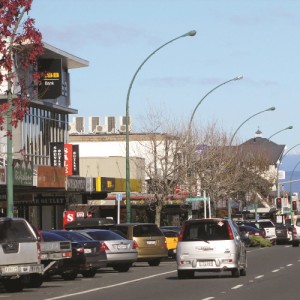Taupo was facing the very real threat of an out-of-centre retail park developing at a time
when the town centre was poorly positioned to respond. In the years leading up to 2009,
the town was struggling with the impacts of the global financial crisis, construction of the
East Taupo Arterial bypassing the town was nearing completion and the flexible zoning of
land along the bypass provided the potential for large scale retailing.
Taupo District 2050 (2006), the district-wide growth management strategy, had laid the
foundations for future land-use pattern in the district. An important element in that strategy
was the East Taupo Arterial. The new road would effectively reposition State Highway One
making it possible to reroute inter-regional traffic. Complementing the regional goals
around improved travel times, were local objectives for improved connectivity between
the town and the lakefront. State Highway One severed the town centre from the lakefront
and major recreational areas, as well as separating the main visitor accommodation areas
from the prime lakefront. For a town with such a strong reliance on the visitor industry, this
severance was a major impediment.
A partnership with the New Zealand Transport Agency to build the bypass road opened
up real possibilities to break down the historical severance issues and reconnect the town
with the lakefront. However, the new road also brought some challenges for the town.
The initial threat was the shifting of potential customers from the route through town out
to the new bypass. Although much of the emphasis had been on “getting the trucks out
of town”, the more direct route also offered a faster alternative to other travellers. This
concerned many retailers in the town centre who rely on the passing trade.
The less obvious threat to the town centre was the new attractiveness of the land along
the bypass route for commercial business activity, particularly large format retailing. While
not so obvious to the community, the flexible zoning provisions in the district plan, made
the risk of a large format retail park a very real probability. Examples in other areas such as
Hamilton and Whakatane had demonstrated the damage that out-of-centre retailing can
inflict on traditional town centres.


